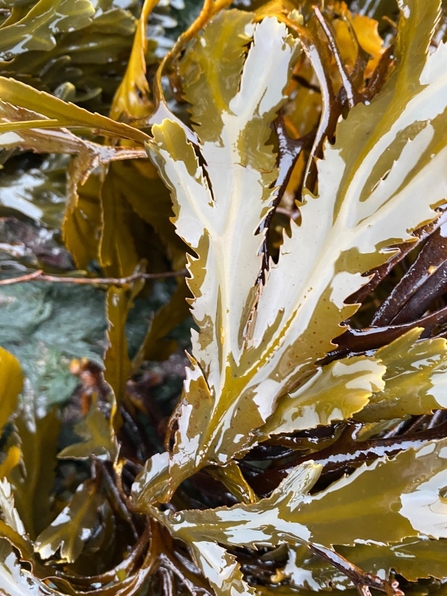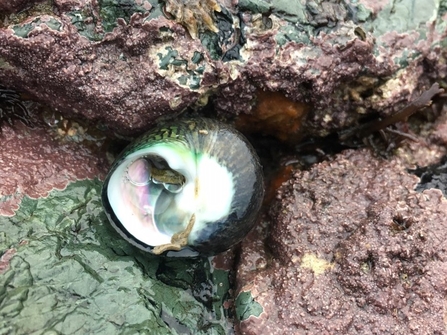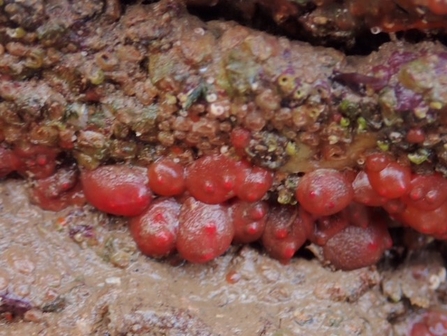We decided to go remote and ask our volunteers to carry out self-led timed species searches with at least 1 INNS species in their list. Timed searches are short, focussed searches for specific species (important to survey for various reasons). They’re accessible surveys both in terms of time to complete, info collected, but also number of species to get to know before going to look for them. We try to fit them in at the end of group surveys, so this was a way to see if they could be used as a reason for our Shoresearchers to head to shore independently. It could, and a lot was spotted (luckily, not many INNS).
The shores visited by the group of volunteers (and some staff), spread across the North Wales region from Colwyn Bay to Aberdaron, Rhoscolyn to Cricieth (almost the limit of rocky shores in the area).
We carried out Timed species searches – looking for bladder wrack/gwymon codog bras (Fucus vessiculosus) 30mins; chinese mitten crab/cranc mynegog Tsieineaidd (Eriocheir sinensis) 30mins; honeycomb worm/llyngyren ddiliau (Sabellaria alveolata) 30mins; pacific oyster/wystrysen y Môr Tawel (Magallana gigas) 150mins; serrated wrack/gwymon danheddog (Fucus serratus) 30 mins; slipper limpet/mochyn ewin/ (Crepidula fornicata) 150mins; toothed topshell/top môr trwchus (Phorcus lineatus) 70mins; volcano barnacle (Perforatus perforatus) 60mins; wakame/morwiail asennog (Undaria pinnatifida) 30mins; wireweed/sargaswm (Sargassum muticum) 30mins.
Also, some not on the WT Shoresearch Irish Sea list, but which have been/will be incorporated into Shoresearch Cymru – Oyster thief (Colpomenia peregrina) 20mins.
Number of Volunteers - 8













